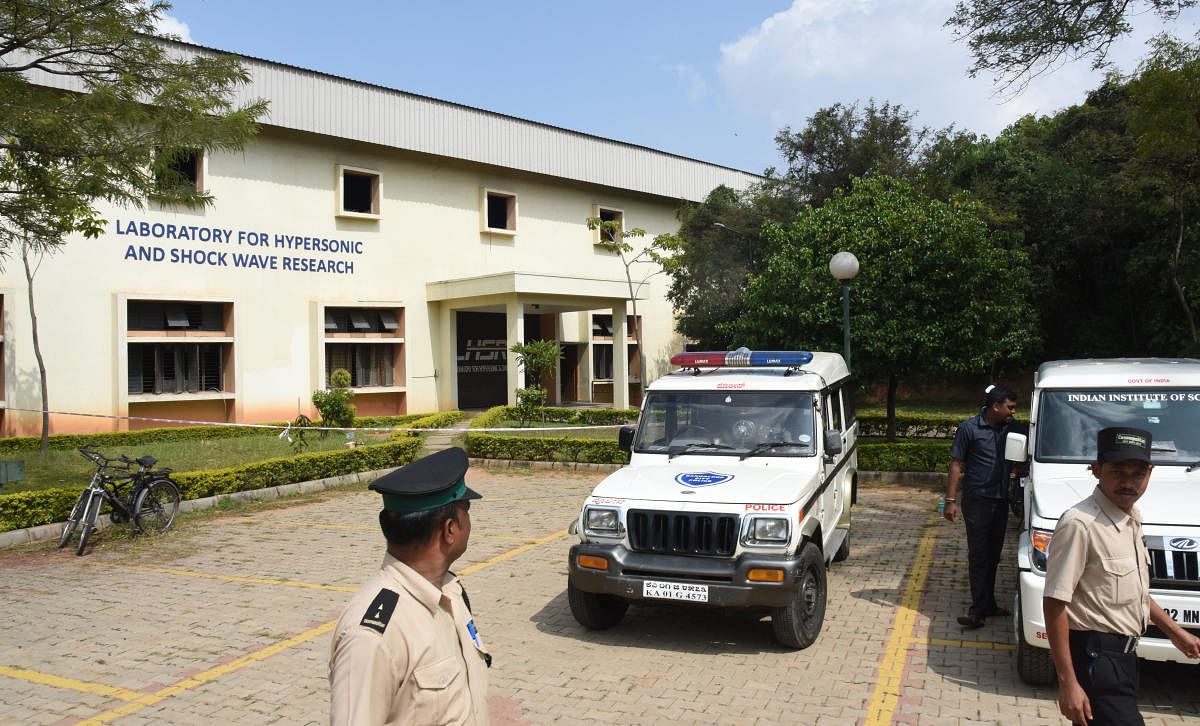
A day after the hydrogen cylinder blast at the IISc laboratory that killed a research scholar and injured three others, the Sadashivanagar police on Thursday booked two IISc professors -- G Jagadeesh and K P J Reddy. They are charged for causing death due to negligence, and for causing grievous injuries by acts endangering lives and personal safety of others.
The FIR was registered based on a complaint filed by IISc’s security chief, Chandrashekhar.
The accused were booked under IPC sections 304(A) and 338. Prof. G Jagadeesh and Prof. K P J Reddy were heading Super-Wave Technology Private Limited, which is conducting research, incubated, promoted and managed by the IISc, the police said.
ALSO READ
The explosion was triggered while four project engineers (research scholars) were busy with an experiment in their research into aerospace technology.
Only the scholars who survived the explosion can explain what exactly caused the hydrogen cylinder to explode during the experiment. A senior fire official who visited the spot said that the scholars were performing an experiment “involving propeller research in aerospace technology.”
Gases like nitrogen, hydrogen, oxygen and helium are used as media inside a cylindrical tunnel to study pressure variations when hyper-sonic waves are passed through the apparatus. The research scholars were monitoring these pressure variations while the blast occurred. “There could have been some pressure variations that the scholars did not expect which might have caused the blast,” a senior official from the Fire and Emergency Services told DH.
Stressing that all industrial gas cylinders could be potential explosives, he said anything stored under pressure could explode if it cannot withstand the pressure inside the restrictive container.
“There was no fire or any other inhalation hazard during the IISc cylinder blast which makes the case a clear-cut one for the police to investigate,” he said.
The Forensic Science Laboratory, meanwhile, collected samples of the cylinder splinters and the experimental apparatus for further investigation, after which a detailed report will be handed over to the police.